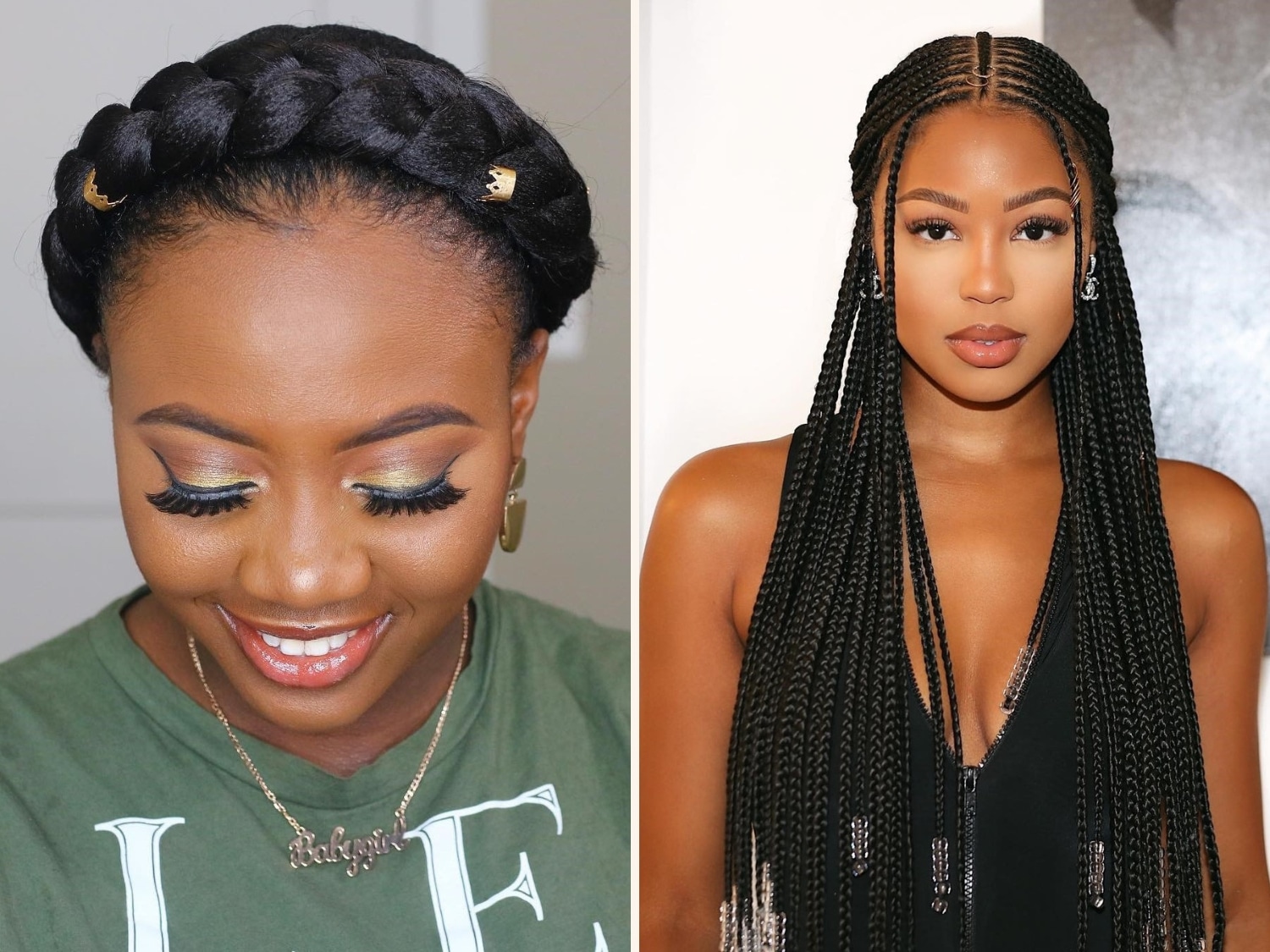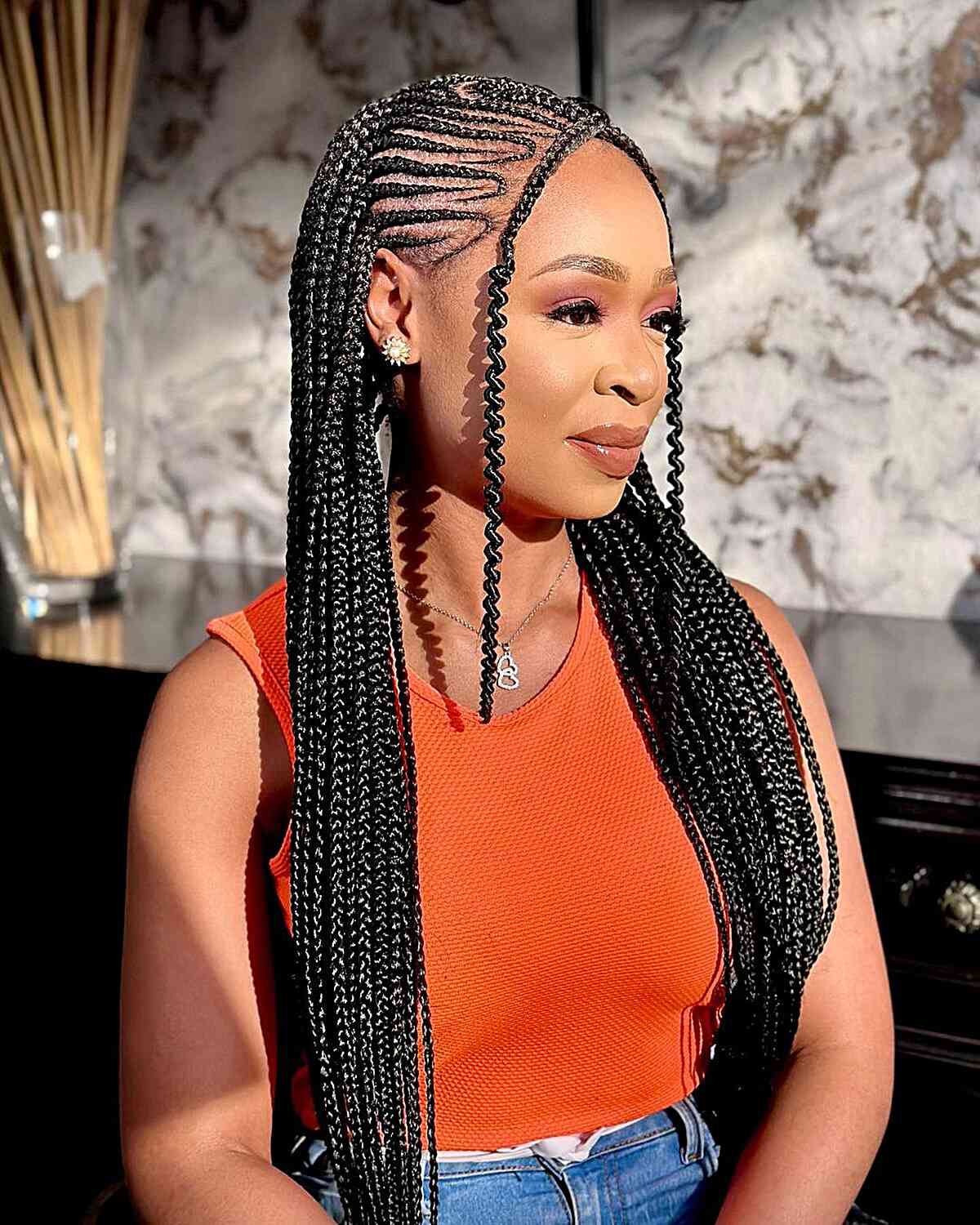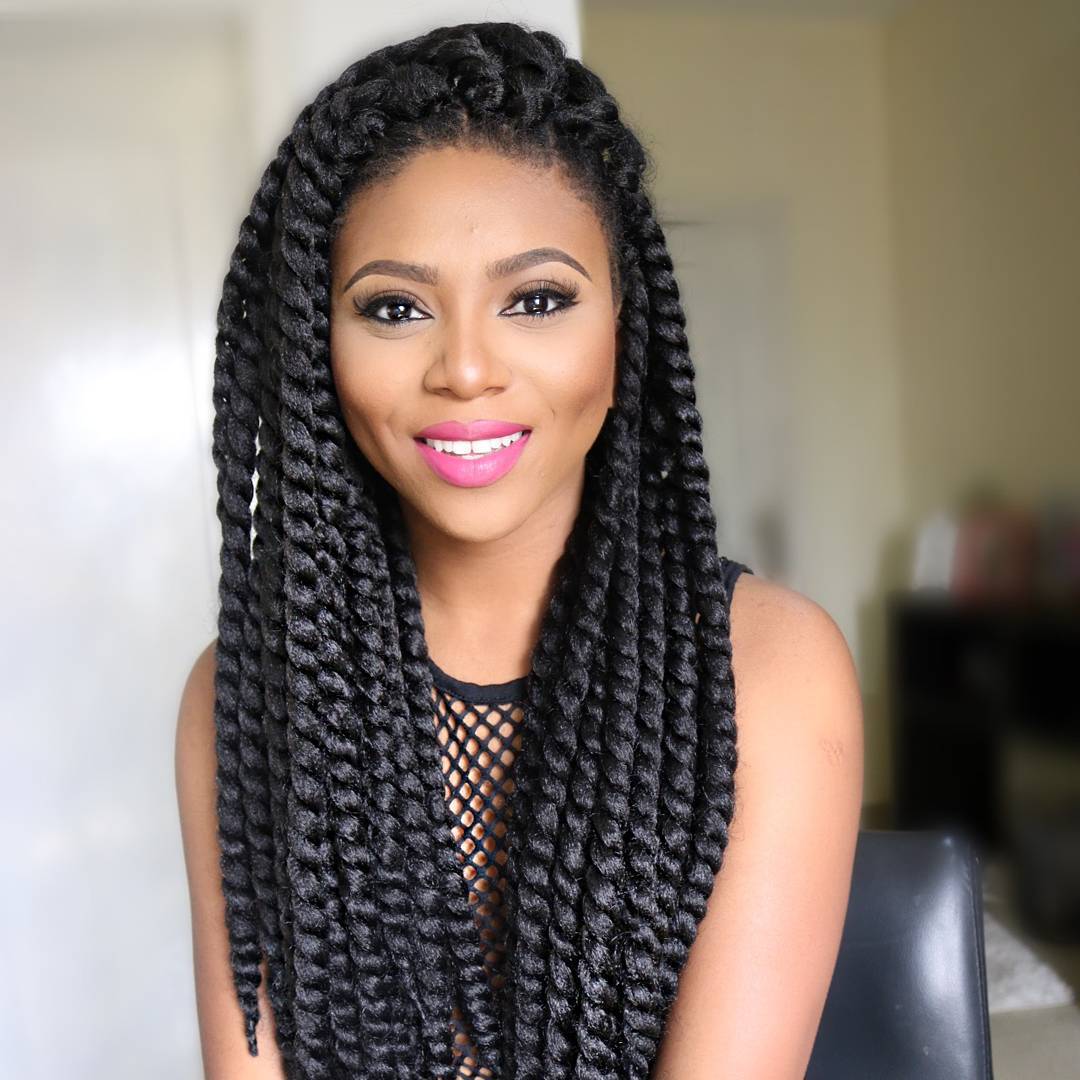
The allure of braids is undeniable. From intricate cornrows to classic French plaits, braids have graced heads for centuries, symbolizing beauty, culture, and artistry. They offer a unique blend of elegance, practicality, and protective styling, making them a perennial favorite across diverse hair types and occasions. However, mastering the art of braiding can be a daunting task for many. Whether it’s the dexterity required, the time commitment, the specific hair length or texture needed, or simply the desire for a less permanent solution, traditional braiding isn’t always feasible or desired.
This is where the magic of "hairstyles that look like braids" comes into play. These innovative techniques and clever styling hacks allow you to achieve the coveted braided aesthetic without the complex plaiting. They offer the illusion of intricate weaving, providing the same visual impact, texture, and often, the same protective benefits, but with significantly less effort and commitment. This article delves into the world of these ingenious styles, exploring why they’re a fantastic alternative, and how you can master them to elevate your hair game.
Why Choose Hairstyles That Look Like Braids?
Opting for styles that mimic braids offers a myriad of advantages, making them an increasingly popular choice for hair enthusiasts worldwide:
- Ease of Creation: Perhaps the most significant benefit is the reduced complexity. Many "faux braid" styles require only basic twisting, tying, or sectioning skills, making them accessible even for beginners.
- Time-Saving: Intricate braids can take hours to complete. These alternatives often shave off significant styling time, perfect for busy mornings or last-minute events.
- Hair Health: Traditional braids, especially if too tight, can put tension on the scalp and hair follicles, potentially leading to breakage or traction alopecia. Many mimic styles involve less pulling and manipulation, reducing stress on your strands. They can also be excellent protective styles, tucking away ends and minimizing exposure to environmental damage.
- Versatility: These styles are incredibly adaptable. They work across a wider range of hair lengths and textures, including layered hair that might struggle to hold a traditional braid. They can be dressed up or down, suitable for casual outings, professional settings, or formal events.
- Temporary Nature: Unlike some long-term braided styles, most "look-alike" options are easy to undo, allowing for frequent style changes without commitment.
- Illusion of Volume and Texture: Techniques like pull-through braids or bubble braids are particularly effective at creating the appearance of fuller, thicker hair, a boon for those with finer strands.
- Accessibility: For those who simply haven’t mastered the art of braiding, or have physical limitations that make intricate hand movements difficult, these styles open up a world of creative possibilities.
Categories of Hairstyles That Look Like Braids
The world of faux braids is rich and diverse, encompassing various techniques that trick the eye into seeing a beautifully woven plait.
1. The Art of the Twist: Two-Strand Wonders
Twisting is arguably the most common and effective way to mimic a braid. It’s simpler than braiding (which typically involves three or more strands) but delivers a remarkably similar aesthetic.
- Rope Braids (Two-Strand Twists): This is the quintessential faux braid. Instead of three strands, you divide your hair into two sections. You then twist each section individually in one direction (e.g., clockwise) and then twist these two twisted sections around each other in the opposite direction (e.g., counter-clockwise). This counter-rotation locks the twist in place, preventing it from unraveling easily.
- How to Style: Rope braids can be done as pigtails, a single side braid, a half-up style, or even a halo crown. For a sophisticated look, gather hair into a low ponytail, split it into two, and create a rope braid down the length.
- Benefits: Quick, elegant, and particularly effective for adding texture and definition to curly or coily hair. When done on the entire head, they form a fantastic protective style (e.g., Havana Twists, Marley Twists, Senegalese Twists), which are essentially large two-strand twists that perfectly mimic the look of individual box braids.
- Flat Twists: Similar to cornrows but using two strands instead of three, flat twists lie flat against the scalp. You section a small portion of hair at the hairline, divide it into two, and begin twisting, incorporating new hair into each section as you move down the scalp.
- How to Style: Flat twists can create intricate patterns on the scalp, leading to beautiful updos or being left down. They are a popular protective style for natural hair, often serving as a base for crochet braids.
- Benefits: Excellent for scalp protection, versatile for updos, and can be very intricate.
2. The Illusionists: Clever Techniques for Braided Looks
These techniques don’t involve traditional plaiting but use strategic sectioning, looping, or knotting to create a braided appearance.
- Pull-Through Braids: This technique creates an incredibly voluminous, intricate-looking "braid" that is surprisingly easy to achieve. It’s not a braid at all, but a series of ponytails looped through each other.
- How to Style: Start by taking a section of hair at the crown and securing it with an elastic. Take another section directly below it, and secure it. Split the top ponytail in half, and pull the second ponytail up through the split. Combine the split sections of the top ponytail with the second ponytail, and add more hair to create a third ponytail below. Repeat the process, continually splitting the upper ponytail and pulling the lower one through. Gently pull apart the "loops" to create volume and a full, braided effect.
- Benefits: Perfect for fine hair as it adds immense volume, looks incredibly complex but is simple, and holds well.
- Bubble Braids: A trendy and playful style that looks like a series of interconnected bubbles, resembling a chunky braid.
- How to Style: Start with a ponytail. Place another elastic a few inches down the ponytail. Gently pull the hair between the two elastics to create a "bubble." Continue adding elastics down the length of the ponytail, creating bubbles and puffing them out as you go. This can be done with pigtails, a single ponytail, or even half-up styles.
- Benefits: Super easy, high-impact, and creates a fun, modern look.
- Knotted Braids: This technique involves tying sections of hair into a series of knots rather than weaving them.
- How to Style: Take two small sections of hair. Tie them into a simple knot. Take another two sections directly below, incorporating the ends of the previous knot, and tie another knot. Repeat down the length. This can be done as a half-up style, a side "braid," or even a full head of mini-knots.
- Benefits: Creates a unique, organic texture that looks very similar to a loose braid, but with less precision required.
- Faux French/Dutch Twist: While traditional French and Dutch braids involve three strands, you can create a similar flat-to-the-head effect using two-strand twists.
- How to Style: Start by taking two sections at the top of your head. Twist them over (for French) or under (for Dutch) each other, incorporating new hair into each section as you move down the head, just as you would with a braid.
- Benefits: A sleek and elegant alternative for updos or crown styles, providing the same clean lines as a traditional French or Dutch braid.
3. Extensions and Accessories: Instant Braided Glamour
For those who want the braided look with minimal effort or a more permanent solution, extensions and accessories are your best friends.
- Crochet Braids: This popular protective style involves cornrowing your natural hair and then using a crochet needle to loop pre-braided or pre-twisted hair extensions onto the cornrows.
- Benefits: Installation is much quicker than individual braids, less tension on the scalp, and offers incredible versatility in terms of style, length, and color. The pre-made extensions perfectly mimic various braid types (box braids, Senegalese twists, Havana twists, faux locs).
- Braided Wigs/Weaves: These are wigs or weave bundles that come pre-styled to look like various braided styles (e.g., box braid wigs, cornrow wigs, twisted wigs).
- Benefits: Zero styling effort required, offers full protective coverage for your natural hair, and allows you to experiment with different braided looks without any commitment.
- Braided Headbands: These are headbands made from synthetic hair that are braided to resemble a halo braid or a braided crown.
- Benefits: Instant elegance! Simply slip it on for the appearance of a beautifully braided crown without any braiding.
- Hair Cuffs/Rings on Sections: While not a braid itself, adding decorative hair cuffs or rings to sections of hair can give the illusion of an elaborate, structured braid.
- How to Style: Section your hair into two or three parts (as if you were going to braid), and instead of braiding, simply secure hair cuffs or rings along the length of each section.
- Benefits: Adds an edgy, bohemian, or high-fashion touch with minimal effort.
Tips for Mastering Hairstyles That Look Like Braids
To get the most out of these clever techniques, keep these tips in mind:
- Preparation is Key: For most faux braids, a little texture helps. Apply a texturizing spray, dry shampoo, or mousse to clean hair to give it some grip and hold. This prevents slippage and helps the style last longer.
- Clean Sectioning: While the techniques might be simpler, neat, even sections are crucial for a polished, professional-looking result. Use a fine-tooth comb for precise parting.
- Small, Clear Elastics: These are your secret weapon, especially for pull-through and bubble braids. They blend seamlessly into your hair, making the structure invisible.
- Pancaking and Pulling: Once you’ve secured a section or completed a twist, gently pull apart the loops or edges of the "braid." This technique, known as "pancaking," creates the illusion of a much thicker, fuller braid and adds a soft, romantic touch.
- Hair Type Considerations:
- Fine Hair: Pull-through braids and bubble braids are excellent for adding volume. Texturizing products are essential.
- Thick Hair: Rope braids and flat twists work beautifully. Ensure you use strong elastics and take slightly larger sections if desired.
- Curly/Coily Hair: Two-strand twists and flat twists are incredibly versatile and protective, enhancing natural curl patterns.
- Practice Makes Perfect: Like any new skill, these styles might take a few tries to master. Don’t get discouraged if your first attempt isn’t flawless.
- Finishing Touches: A light-hold hairspray will help secure your style without making it stiff. A shine spray can add a beautiful luster.
Conclusion
The desire for beautiful, intricate hairstyles doesn’t have to be limited by your braiding prowess or the time you have available. "Hairstyles that look like braids" offer a fantastic alternative, providing all the aesthetic appeal of traditional plaits with significantly less effort and commitment. From the simplicity of two-strand twists to the voluminous illusion of pull-through braids, and the instant glamour of crochet styles, there’s a technique for everyone.
Embrace the art of illusion and experiment with these clever styles. You’ll discover a world of versatility, hair-health benefits, and effortless elegance that will keep your hair looking beautifully "braided" without ever having to plait a single strand. So go ahead, trick the eye, and enjoy the endless possibilities!






